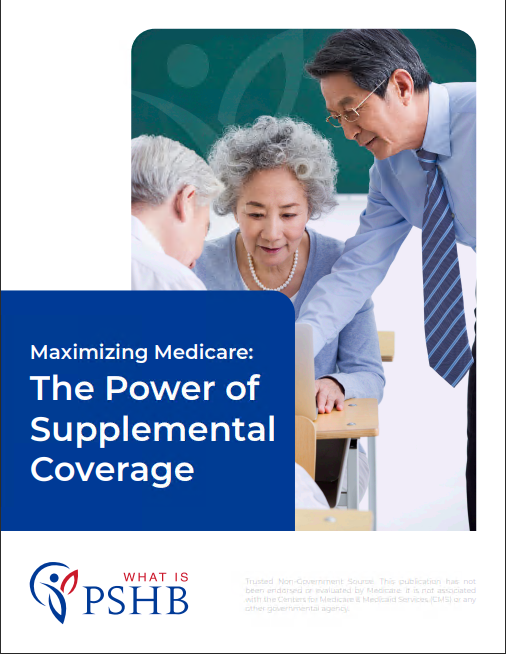Key Takeaways
-
Transitioning from FEHB to PSHB can lower your monthly premiums and enhance cost-sharing benefits—but only if you’re eligible and act within the proper timeframe.
-
Some enrollment windows are fixed while others depend on personal circumstances. Missing the right one could result in higher costs or delayed coverage.
Understanding the FEHB to PSHB Transition in 2025
The Postal Service Health Benefits (PSHB) Program officially replaced the Federal Employees Health Benefits (FEHB) Program for USPS employees and annuitants as of January 1, 2025. This change was designed to tailor health benefits more closely to the needs of postal workers, but the transition is not automatic for everyone.
If you’re a Postal Service annuitant or an employee approaching retirement, understanding when and how to switch from FEHB to PSHB can make a substantial difference in your healthcare expenses.
Who Needs to Make the Switch
Not every USPS retiree or employee needs to actively switch. Your status determines whether you were automatically transitioned or need to take action:
-
Automatically transitioned: If you were enrolled in an FEHB plan as a USPS employee or annuitant on December 31, 2024, your coverage was automatically moved to a corresponding PSHB plan starting January 1, 2025.
-
Not automatically transitioned: If you were covered under a non-USPS family member’s FEHB plan, or you retired before certain eligibility criteria were finalized, you may not have been transitioned. In these cases, you need to enroll manually during Open Season or a Special Enrollment Period.
Timing Is Everything: Enrollment Periods That Matter
There are a few critical timelines in 2025 and beyond that you must understand to take full advantage of PSHB benefits.
1. Open Season (November–December)
This is the most common window for plan selection or changes. The Open Season typically runs from early November to mid-December each year. If you’re already in the PSHB system, you can:
-
Change plans
-
Switch coverage types (e.g., Self Only to Self and Family)
-
Add or remove eligible dependents
2. Special Enrollment Period (SEP)
Some life events trigger a 60-day Special Enrollment Period. These include:
-
Retirement
-
Loss of other coverage
-
Moving out of your plan’s service area
-
Gaining or losing a dependent (e.g., through birth, adoption, divorce, or death)
If you’re newly eligible for Medicare Part B in 2025 and meet PSHB eligibility criteria, this is also a key opportunity to make your switch count.
3. Medicare Part B Coordination Requirement
For many Medicare-eligible Postal Service annuitants and family members, enrollment in Medicare Part B is mandatory to maintain PSHB coverage. If you turned 65 in 2025 or are planning to retire soon, failing to enroll in Part B during your Initial Enrollment Period could jeopardize your PSHB eligibility or increase your costs.
What Happens If You Miss the Right Timing
Missing the correct enrollment window can result in a few avoidable issues:
-
Delayed coverage start: If you miss Open Season or don’t qualify for a Special Enrollment Period, your changes won’t take effect until the next annual window.
-
Loss of cost savings: Many PSHB plans offer enhanced benefits when paired with Medicare Part B. Delaying Part B enrollment could mean higher out-of-pocket costs.
-
Permanent penalties: Delaying Medicare Part B enrollment beyond your Initial Enrollment Period without other credible coverage results in a permanent premium penalty.
How PSHB Costs Compare to FEHB
In 2025, PSHB plans are structured similarly to FEHB but have some key financial distinctions that can either help or hurt depending on your situation.
Premium Contributions
The government continues to pay approximately 70% of the total premium under PSHB, just like FEHB. However, the actual dollar amounts differ. Some PSHB plans have slightly lower employee or annuitant premiums compared to their FEHB counterparts.
Deductibles and Out-of-Pocket Limits
You may find lower in-network deductibles or waived deductibles when PSHB is combined with Medicare Part B. However, plans vary widely. For instance:
-
Low-deductible plans may have a $350–$500 deductible.
-
High-deductible plans can have deductibles in the $1,500–$2,000 range.
Out-of-pocket maximums also differ. PSHB sets in-network caps at around $7,500 for Self Only and $15,000 for families, with Medicare integration often reducing your actual liability.
Prescription Drug Costs
All PSHB plans offer integrated Medicare Part D drug coverage for Medicare-eligible enrollees through an Employer Group Waiver Plan (EGWP). This includes:
-
$2,000 annual out-of-pocket cap
-
$35 insulin cap
-
Access to broader pharmacy networks
If you miss enrollment or opt out, you lose access to this enhanced coverage until the next eligible period—and may be stuck with higher retail drug costs.
Coordination With Medicare Is Critical
If you or a family member are eligible for Medicare, timing your transition and enrollment is essential. Medicare Part B not only expands your coverage but often reduces cost-sharing under PSHB.
Here’s what coordination means for you:
-
Lower copayments: Many PSHB plans reduce or waive copayments for office visits and hospital services when combined with Medicare.
-
Waived deductibles: Some plans eliminate in-network deductibles when Medicare is primary.
-
Prescription coverage integration: Enrollment in Medicare Part B automatically connects you with EGWP prescription drug benefits under PSHB.
If you’re retiring in 2025, aim to enroll in Medicare Part B during your 7-month Initial Enrollment Period, which starts 3 months before the month you turn 65 and ends 3 months after.
When It Makes Sense to Delay the Switch
There are a few rare situations where delaying the switch from FEHB to PSHB (or staying under a non-Postal FEHB plan) may be appropriate:
-
You’re covered as a dependent under a spouse’s non-Postal FEHB plan that has better benefits.
-
You live abroad and are exempt from Medicare Part B enrollment.
-
You qualify for an exemption from mandatory Medicare coordination under PSHB rules (e.g., retired before January 1, 2025).
These situations should be discussed with a licensed agent to avoid unintended loss of benefits.
Making the Most of Open Season Going Forward
Once you’re enrolled in PSHB, Open Season remains your primary annual opportunity to make changes. In future years, it’s important to:
-
Compare PSHB plans annually to identify cost-saving opportunities
-
Watch for changes in benefits, deductibles, or copayments
-
Ensure continued Medicare enrollment if required
Failing to review your options can lead to overspending on premiums or missing out on coverage that better fits your needs.
Timing Your Switch Can Save More Than Money
Switching to PSHB is not just about the dollar amount on your premium. If timed correctly, it can unlock better coordination with Medicare, reduce your exposure to large medical bills, and help you access broader pharmacy networks.
But timing is critical. Waiting too long, enrolling late in Medicare Part B, or assuming your coverage automatically transferred can result in financial penalties or missed benefits.
To make the most of your health coverage, contact a licensed agent listed on this website. They can help you determine if you’re in the right plan, assist with enrollment, and clarify timelines so you avoid unnecessary costs.












